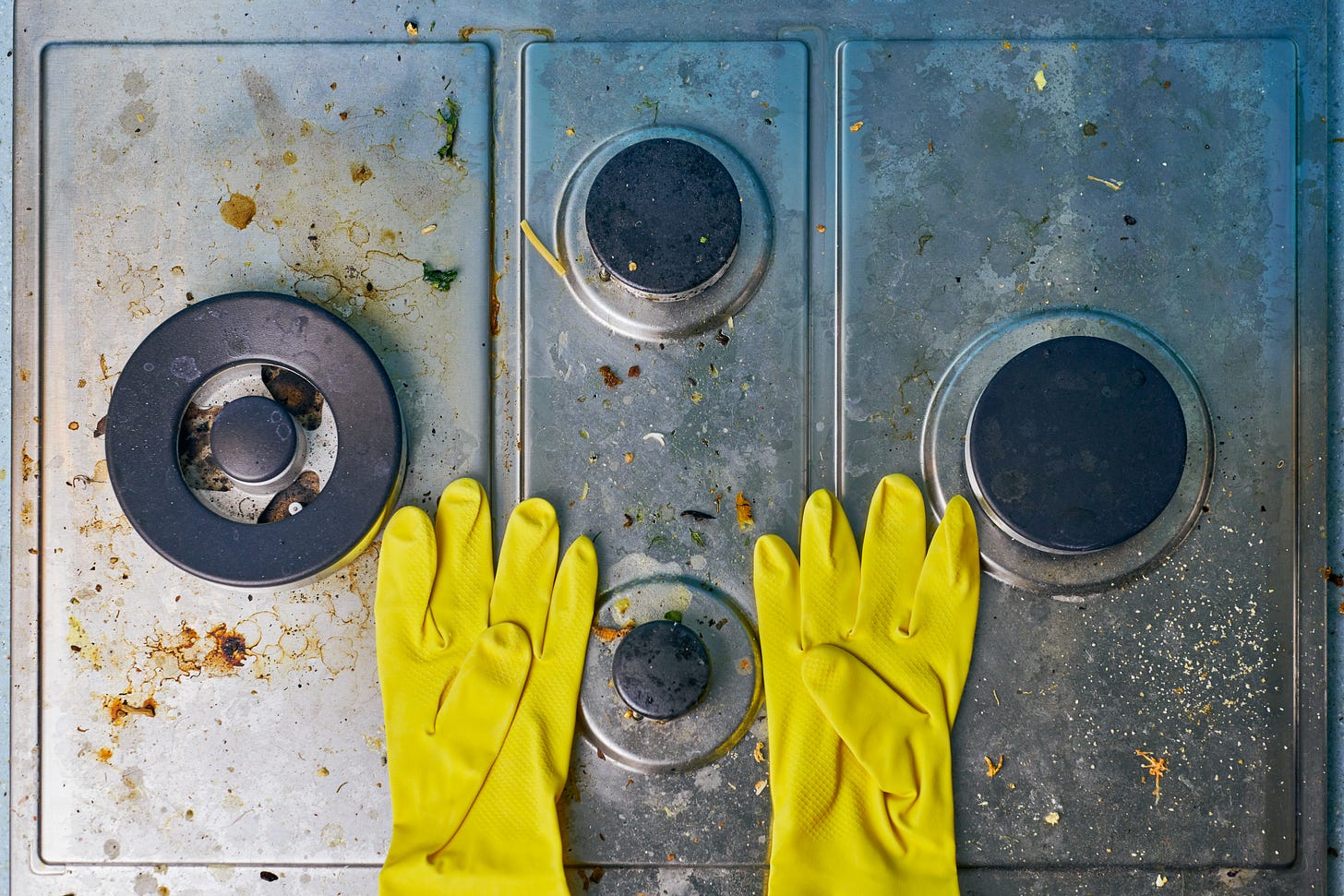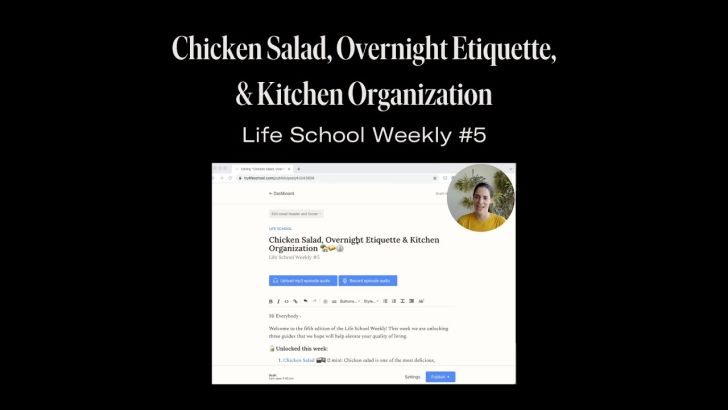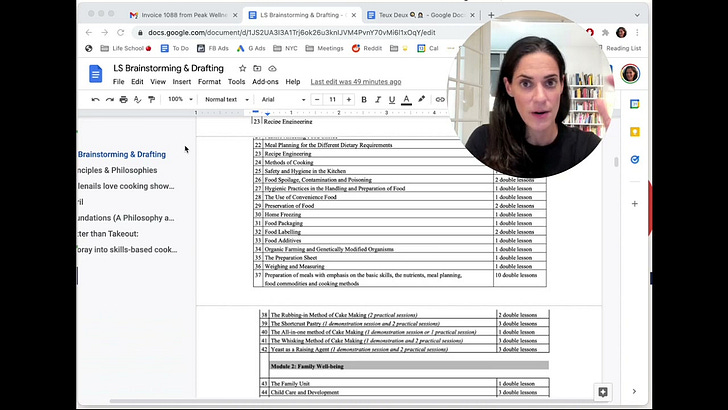This lesson is 662 words, a 2 min and 38 second read time. It is the second lesson of The Weekly Kitchen Cleaning Routine.
📍 Introduction
Like a painter approaching a blank canvas or a writer sitting down to a neat desk - a home chef at a shiny cooktop is likely to feel more inspired & at ease.
With that said, a stovetop isn’t always so easy to clean. Splatters, spills, smears - there are many ways that grease and residue build up and cake on. This lesson is about how to keep the stovetop clean. Let’s dive in.
⚙️ Required Gear
Towel or sponge for cleaning (e.g., terry bar mop)
Towel for wiping and drying
All-purpose cleaning spray (or dish soap)
Baking soda (optional)
✅ Instructions
Gas stove with burners
Ensure the stove is off and cool.
Remove all grates (what pots and pans sit on) and burner caps (disks on tops of burner heads). If needed, wash everything in the dishwasher or by hand.
Dry-wipe debris and crumbs off the stovetop.
For a light clean, spray 2-3 times with cleaning spray, allow it to sit for one minute, and wipe the surface down with a cloth. Wet one side of a fresh cloth to rinse, using the other side to wipe dry.
For a deeper clean, use a warm soapy non-abrasive sponge. Wash down the stovetop using minimal water to avoid getting burner heads wet and damaging components. To remove burnt or stuck on food, add a paste of baking soda and water for 2-3 minutes. Wring and reuse sponge to rinse or use a fresh towel (half for rinsing, half for wiping dry).
Reassemble the stove.
Electric stove with coils
Ensure the stove is turned off and cool.
Wipe down coils with a damp cloth. If coil burners are heavily soiled, turn coils on high for a few minutes to burn off residue. Once cooled, use a dry toothbrush or abrasive sponge to scrape off any remaining residue.
If drip pans are heavily soiled, pull coils out of the stove and remove drip pans. Wash them in warm soapy water or soak in a mixture of one part vinegar and two parts baking soda.
Rinse and wipe down with water and allow to dry.
Lift the top to check for burnt food underneath, removing as necessary.
When all parts are dry, reassemble.
Glass or ceramic cooktop
Dry-wipe surface to collect any food pieces or crumbs.
Spray with warm water or all-purpose cleaner. Wipe with a microfiber cloth or clean towel.
To deep clean, sprinkle baking soda on top and cover with warm damp soapy cloths. Let sit for 15-30 minutes. Remove towels, using cloths to wipe down the cooktop.
Use a lint-free cloth (e.g., microfiber) to dry and polish.
📓 Notes, Tips & Tricks
Ideally, wipe down the stovetop after every use. Messes are easiest to lift off when fresh. More quick cleans = less deep cleans.
If you don’t have time to do a proper clean, at least wipe off new spots, drips, or spills.
If you have many crumbs on or inside the stove, you can use a vacuum cleaner to sweep them up.
Avoid abrasive cleaning solutions and pads that can scratch the stovetop.
To scrape off hardened foods, use a plastic knife or spatula. Avoid metal, which can scratch.
Stovetop cleaner is highly optional and rarely required. Soap, all-purpose cleaner, and baking soda are almost always sufficient.
Cotton cloth works well for this job as it’s strong, absorbent, & inexpensive. Terry cloth is particularly effective as it has extra texture for scrubbing. Dedicated bar mops (like these) or old towels cut up into rags work quite well.
🎓 Further Study:
The Daily Kitchen Cleaning Routine [Life School]
How to Launder Your Kitchen Towels 🎬 [Life School]
How to Clean a Stove Top [YouTube]
Cleaning Routine - Electric Stovetop 🎬 [YouTube]
How to Clean Your Glass Stovetop! 🎬 [YouTube]
—
✏️ What should we research next? To weigh in, fill out this 1-minute survey here.
🎧 Prefer to listen? Subscribe on iTunes, Spotify, or Overcast.










